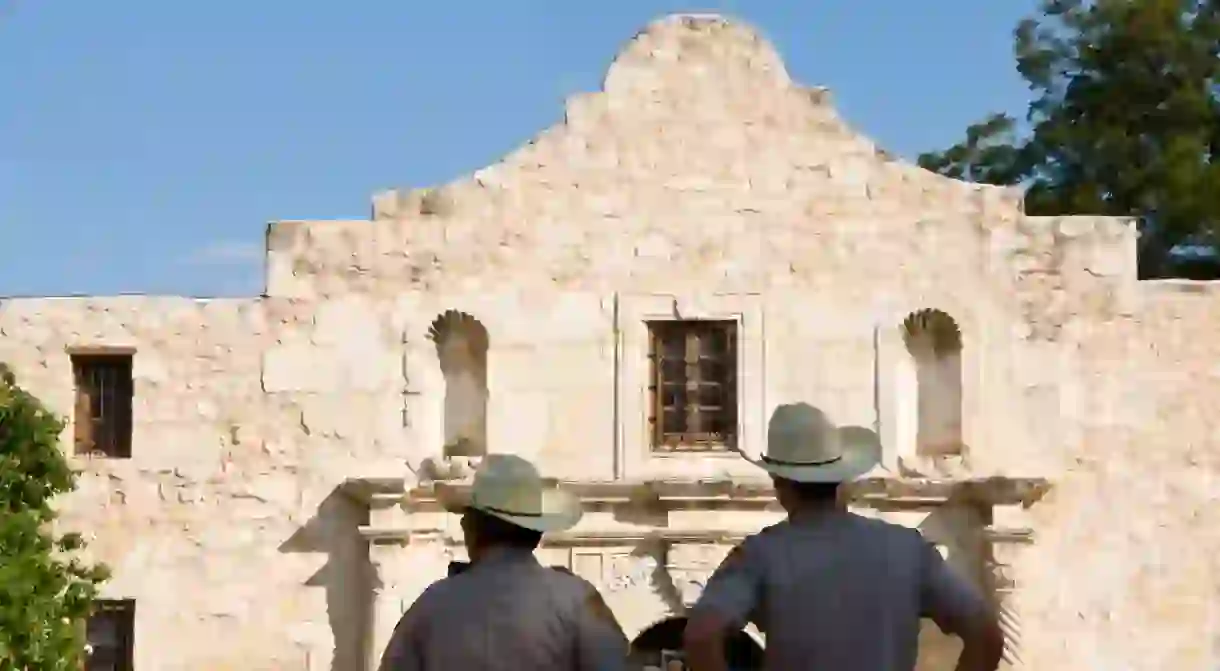The History Of The Alamo In 1 Minute

The Alamo was built in 1744 and was originally known as the Alamo Mission in San Antonio, a Roman Catholic mission and fortress compound. It’s known for being the location of the Battle of the Alamo in 1836 when the Texans lost to Mexican troops.
Origin
The Alamo was built by the Spanish to educate Native Americans after they converted to Christianity. It later became a military unit and was eventually surrendered to the Texas Army after the Siege of Bexar. The Mexican army came back months later and tore down walls and defeated the Texas soldiers in the Battle of the Alamo, which was a pivotal moment in the Texas Revolution.

Pre-History and Spanish Era
The site on which the Alamo stands has a rich prehistory, as it was originally inhabited by indigenous peoples for thousands of years. When Spanish explorers arrived in the region during the early 18th century, they encountered the Payaya Indians and eventually established a mission and presidio (fort) in 1718. The purpose was to spread Christianity and protect the Spanish territory from potential threats.
The battle didn’t discourage Texas soldiers but inspired them to join the army to help defeat the Mexican Army. The phrase ‘Remember the Alamo’ was coined so Texas troops can remember what happened to the men that died in the Alamo battle. The battle became a symbol of heroic resistance and their struggle for independence. It wasn’t until a year later at The Battle of San Jacinto where the Texans won their independence from Mexico.
The Texas Revolution and the Battle of the Alamo
In 1835, tensions between the Texan settlers and the Mexican government escalated, eventually leading to the Texas Revolution. In December of that year, Texan rebels took control of the Alamo and transformed it into a stronghold in their fight for independence.
On February 23, 1836, the Mexican army, led by General Antonio López de Santa Anna, launched a siege on the Alamo. The small garrison of Texan defenders, including prominent figures like William B. Travis, James Bowie, and the legendary frontiersman Davy Crockett, bravely held their ground against overwhelming odds. The siege lasted for 13 days, during which the Alamo defenders valiantly defended their positions.
On March 6, 1836, the Mexican forces breached the Alamo’s walls and launched a final assault. In a desperate last stand, the Texan defenders fought heroically, but they were eventually overwhelmed. The battle resulted in the deaths of nearly all the Alamo defenders, with only a few women and children spared.

“Remember the Alamo”
News of the tragic loss at the Alamo spread throughout Texas, inspiring a surge of support and determination among the Texan forces. The rallying cry “Remember the Alamo” became a symbol of courage and defiance, propelling the Texan forces to achieve victories in subsequent battles. The Battle of the Alamo galvanized the Texan cause, and on April 21, 1836, Texan forces under General Sam Houston defeated the Mexican army at the Battle of San Jacinto, securing Texas‘ independence.
Conclusion
The Alamo stands not only as a physical monument but also as a testament to the indomitable spirit of those who fought for freedom and independence. Its significance has grown beyond the borders of Texas, becoming a symbol of courage and resilience that resonates with people worldwide. The Alamo’s legacy lives on in the hearts of those who “Remember the Alamo,” ensuring that the memory of its defenders and their sacrifice remains alive for generations to come.
The Alamo has been restored since then. More than 2.5 million people visit the historical landmark a year, making it the most visited attraction in all of Texas.
Did you know – Culture Trip now does bookable, small-group trips? Pick from authentic, immersive Epic Trips, compact and action-packed Mini Trips and sparkling, expansive Sailing Trips.













